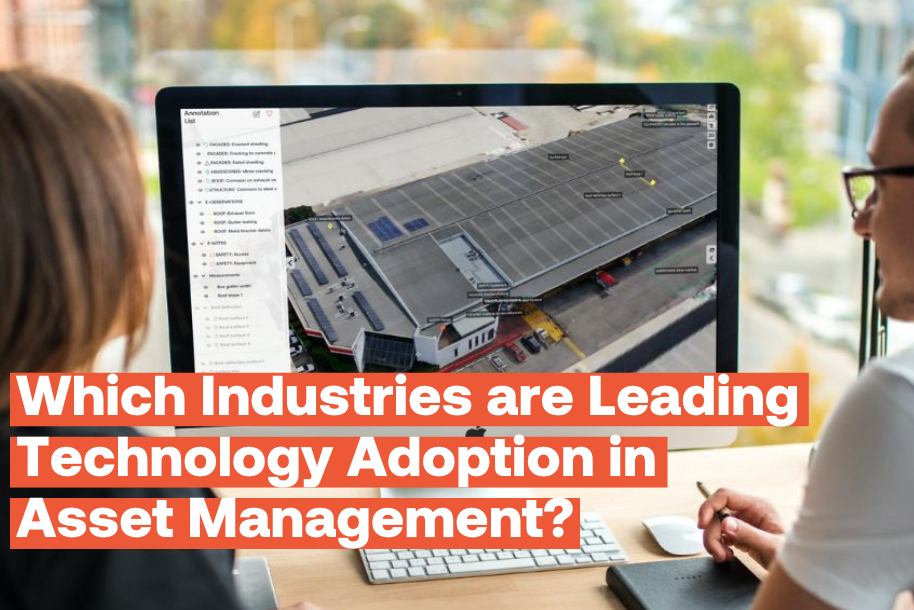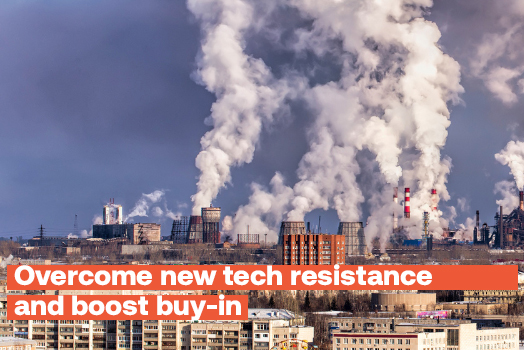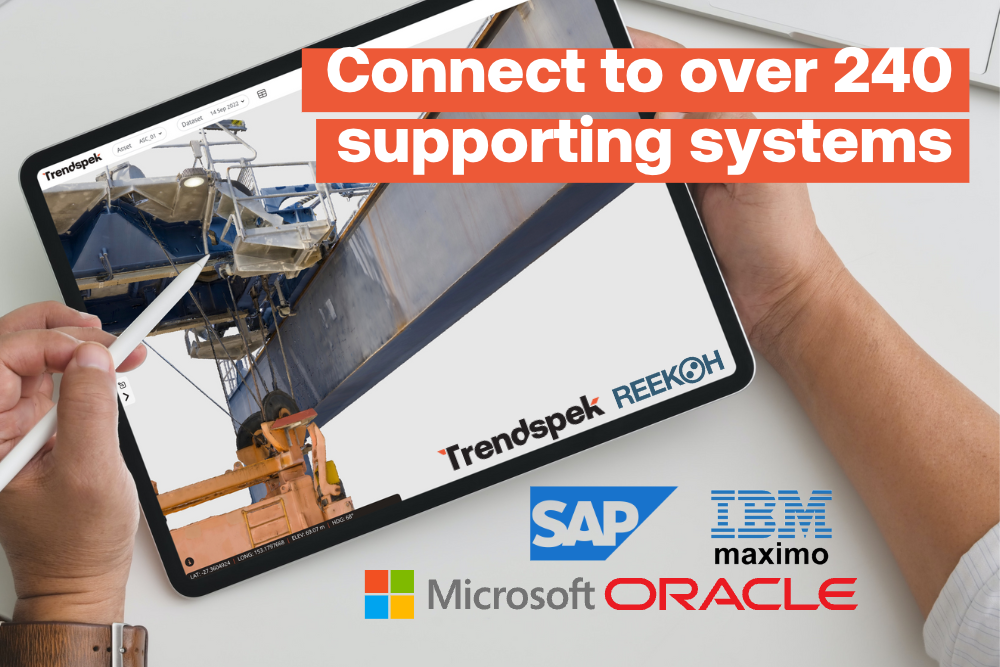
Right now, digital transformation is a key buzzword across almost all industries, and for good reason. Whether it’s the phones we use to conduct our business, the programs we call on to manage our contacts, or the platforms that drive the deliverables for our own clients or stakeholders, advancements in technology are transforming almost every aspect of how we approach our work.
Like any change, the rate at which different industries and businesses adopt new technology differs greatly, with some leading the charge, willing to be the first to try and potentially benefit from something new, and others happy to hang back, watch, and see how it works out for those early adapters.
So, when it comes to the industries we serve at Trendspek – your industries – property, infrastructure, water and energy, which have been the first to jump onto the latest trends and solutions available?
Digital Twins – a common measure of adoption
Bringing advantages like improved processes, products and systems, technology adoption has become a critical success factor by which businesses are measured in this fast-paced digital world. The ability to embrace new technologies and incorporate them into a business model provides a significant competitive advantage.
While there is some shared technology that will be adopted across most businesses, a range of specialist solutions are also regularly being delivered to specific industries.
In asset management, digital twin technology has become popular over the last decade, for businesses that require and can benefit from the ability to view and analyse their asset on screen.
In 2019, a Gartner survey revealed “digital twins were entering mainstream use by organisations”, predicting that “75 per cent of Internet of Things (IoT) organisations also use digital twin technology or plan to use it by 2020”.
Furthermore, they estimated that by 2027, “over 40 per cent of large companies worldwide will be using digital twins in their projects to increase revenue.”
The technology behind digital twins is now becoming a critical component of the digital transformation adoption journey for many businesses. Here at Trendspek, we have taken that one step further – moving beyond the standard or last-gen digital twin with our more advanced Precision Reality Twins (PRT) – a high-fidelity and interactive 3D model virtually indistinguishable from the original asset.
As an industry-first, we’ve jumped right into adopting technology, and our clients are reaping the benefits from this. So, let’s look to other industries – which ones are leading the charge when it comes to technology adoption in asset management (and particularly digital twin technology), and which ones are taking a back seat?

An early adopter: The Energy Industry
Research tells us digital technologies are “already widely used in energy-use sectors”. In fact, “in the 1970s, power utilities were digital pioneers, using emerging technologies to facilitate grid management and operation.”
In addition, oil and gas organisations have been using digital technologies for quite some time to enhance their decision-making processes related to exploration and production assets, such as reservoirs and pipelines.
Among other uses, energy providers have adopted digital twin technology to increase their ability to make informed decisions about their energy mix. As an example, it is commonly used to model and simulate renewable energy sources, another critical evolutionary path for these organisations as public opinion pushes for cleaner, greener energy options.
This public focus has also led to greater scrutiny of the impact of energy producers on the environment, and combined with evolving policy and regulation, has encouraged (and in some cases mandated) an increased focus on sustainability and accountability for impact.
In fact, one report by Construction Drive suggests along with consumer products, utility industries are “leading the implementation of the technology when it comes to sustainability applications.” Based on a survey conducted in those industries, it says, “among those organisations that have already begun implementing digital twin technology, they say they have realized a combined average of a 16% improvement in sustainability metrics.”
At Trendspek, we have seen first-hand, that businesses within the industry are also looking for more, and are welcoming the adoption of our Precision Reality Twins technology which enables faster and more accurate defect identification and swifter decision-making that can save lives and jobs, and build more productive and sustainable communities.

A late adopter: The Property Industry
Looking at the property industry, especially the real estate and construction sectors, research indicates it is one of the “least digitalised industries and slow to innovation, especially in its adoption of digital technologies”.
Although The Innovator’s Dilemma suggests adoption is speeding up with time and exciting changes are taking place, there is “still very limited implementation of technology in this industry”. More importantly, those technologies already adopted are often not used to their full capacity – not an uncommon story in any industry.
Nevertheless, we know that technology adoption in the property industry for asset management, especially digital twin technology, has the potential to “transform the industry” through a wide range of applications, including improving the design, construction, and management of buildings and optimising building management processes (for example, monitoring building systems, improving energy efficiency and simulating different scenarios).
Of those already using digital twin technologies in the property industry, a 35% increase in building maintenance and operational efficiency was achieved and a 20% increase in productivity.
Until now, managing property assets had always meant working through the challenging logistics of regular onsite inspections -- working at heights or in unsafe environments, capturing defects while accounting for human error, and planning maintenance or purchase with insufficient information.
With this in mind, there is no denying that technological advancements, including digital twins, could be “ core enablers” for areas of improvement in the property industry, including asset management. Despite this, there is still a long way to go if this industry is to truly embrace change.
Of note, our PRTs are the next generation of asset models, but if property businesses are yet to adopt digital twins en-masse, they risk being left further and further behind.
Our leading Precision Asset Intelligence software reduces the complexity of property asset management, providing a high-detail, interactive model of every angle of an asset to enable inspection, reporting, and even quoting with real certainty.
PGIM Real Estate, Australia, is one of the companies in the property industry pushing forward with technology adoption in asset management. Using Trendspek’s technology, they can ensure comprehensive due diligence and detailed inspections of each property are completed.

A Note on Barriers to Entry
We know that adopting and implementing technology comes with various barriers to entry, ranging from integration into existing systems and processes, to data management, and security and privacy concerns.
The property industry is often “touted as inefficient and unproductive due to the lack of cyber-physical interconnectivity” and its “inability to embrace advancement in technologies”.
A key reason for this challenge is the property industry being a “complex mix of stakeholders” ranging from tenants to facility managers and owners. Each of them has their own interests and agendas, which makes it difficult for them to see the bigger picture – that is, seeing the full benefits of adopting emerging technology in asset management, especially when it comes to digital twins and beyond.
To become a pioneer in the industry, we know that a shift in the mindset of all the stakeholders is required – a mindset open to new technologies and the incredible benefits they can offer.
This shift in mindset is especially important to assist with the current major disconnect between ‘interest’ and ‘adoption’. Caused largely by an industry caught up in “higher priorities until this shift takes place, we know the industry will risk remaining behind the game.
Additional barriers to adoption and implementation include cost and ROI, relevant skill sets and tech talent, a culture of ‘if-it-isn’t-broken-don’t-ifx-it’, integration capabilities and competing priorities.
A final wrap-up
Technology advancements have the power to (and already do) transform our lives – how we undertake day-to-day and complex tasks.
Industries adopting and embracing new solutions, rapidly, are leading the way, though those taking a backseat still have time to catch up if they put their foot on the accelerator and get moving.
To learn more about our Precision Reality Twins, be sure to get in touch!


